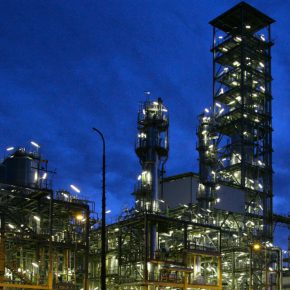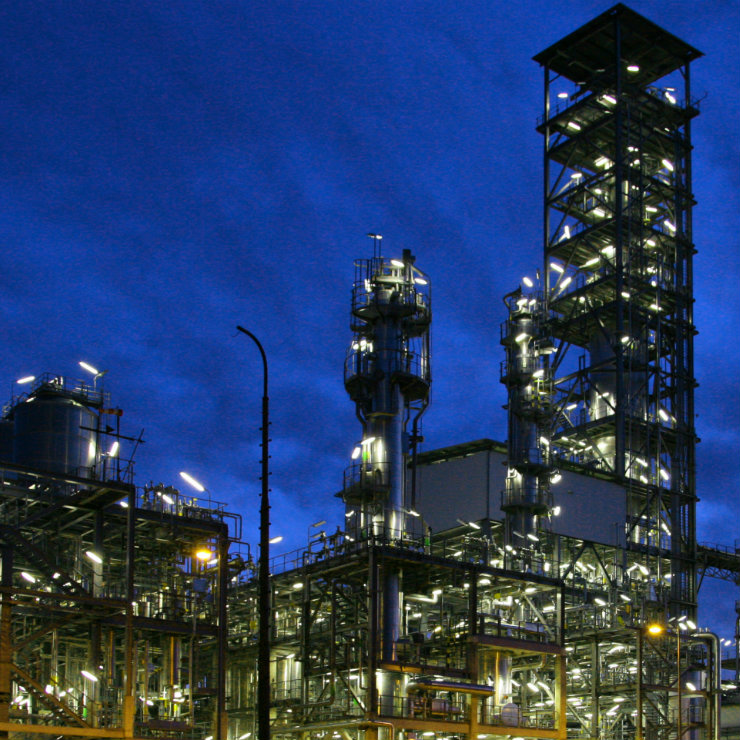German automotive industry at a crossroads
Category: Business

Polypropylene plant of MOL (Mikulova, CC BY-SA)
EY added in the report that there is a significant correlation between changes in the country’s GDP and the number of M&A deals carried out in Hungary and analysts are expecting gradual expansion in the following years.
More than 90 per cent of the M&A transactions in the period were under USD100m in value, with the biggest deal being the Chinese Wanhua group’s purchase of BorsodChem Zrt. (a leading chemical raw material manufacturing company) for USD930m in 2011, followed by Hungarian oil company MOL’s (the largest in the CEE oil company) purchase of Eni in Czech Republic, Slovakia and Romania, for more than USD600m, and Richter Gedeon’s (pharmaceutical and biotechnology company) investment in Switzerland with the purchase of PregLem for USD442m.
In the majority of the cases both the company making the purchase and the company being purchased were Hungarians firms active in the market, that is in 60 per cent of the cases during the period, the EY report shows.
With regards to foreign companies making purchases in the Hungarian market, U.S. and German companies were the most active with 33 and 21 transactions, respectively.
The dominant sector in terms of the number of M&A transactions was the IT and technology sector with a total of 131 completed M&A deals.
The sector has experienced a decline in deal activity for the fifth consecutive year. This comes as no surprise given the uncertainty over long-term fundamentals and increasing levels of financial distress.
“It is increasingly clear that position on the cost curve is critical as supply-side correction looks to be the only way to restore fortunes,” EY said. “However, with so much uncertainty linked to finance-backed commodity trades, the supply-demand picture is arguably less clear than ever. As a result, the supply-side correction is coming; the question is how much of it will be voluntary shutdowns? And how much will be forced via corporate failures?”
Investors are increasingly short of patience, as the dramatic fall in share prices in 2015 demonstrated. There is also an increase in the level of activity from activist shareholders, such as Casablanca (Cliffs Resources) and Carl Icahn (Freeport-McMoRan).
“Unless equity prices begin to pick up, which seems unlikely in the short term, these investors will continue to circle the industry looking for opportunities to stimulate change and drive value out of challenging situations,” EY said.
Overall, capital raised across the sector was down by about 10 per cent y-o-y. The decrease was primarily due to a sharp drop-off in loan finance to the sector, which fell to USD44bn in 2015 from USD122bn in 2014.
Much of this was for the refinancing of existing facilities, emphasizing the limited amount of new finance going into projects. However, this trend comes as no surprise given the very difficult — and worsening — trading environment that the industry faced during 2015.
The backdrop of challenging market conditions has led to a number of alternative financing strategies being pursued, with asset disposals featuring prominently and almost USUSD3b of streaming finance being announced across the industry.
Gone are the megadeals with the unashamed focus on consolidating market share. At its 2007 peak, we saw over USD200bn of deal value across the sector, with a small number of proposed deals at the time valued well in excess of USD70bn. This deal rationale has limited currency in the sector right now; size is not all-important, but instead the focus is on higher returns on capital, greater optionality and flexibility across asset portfolios, and an improved cost curve position.



